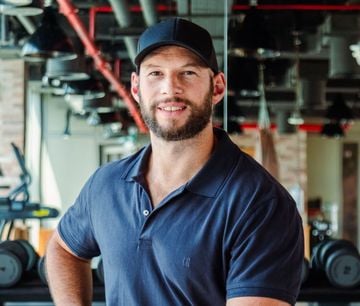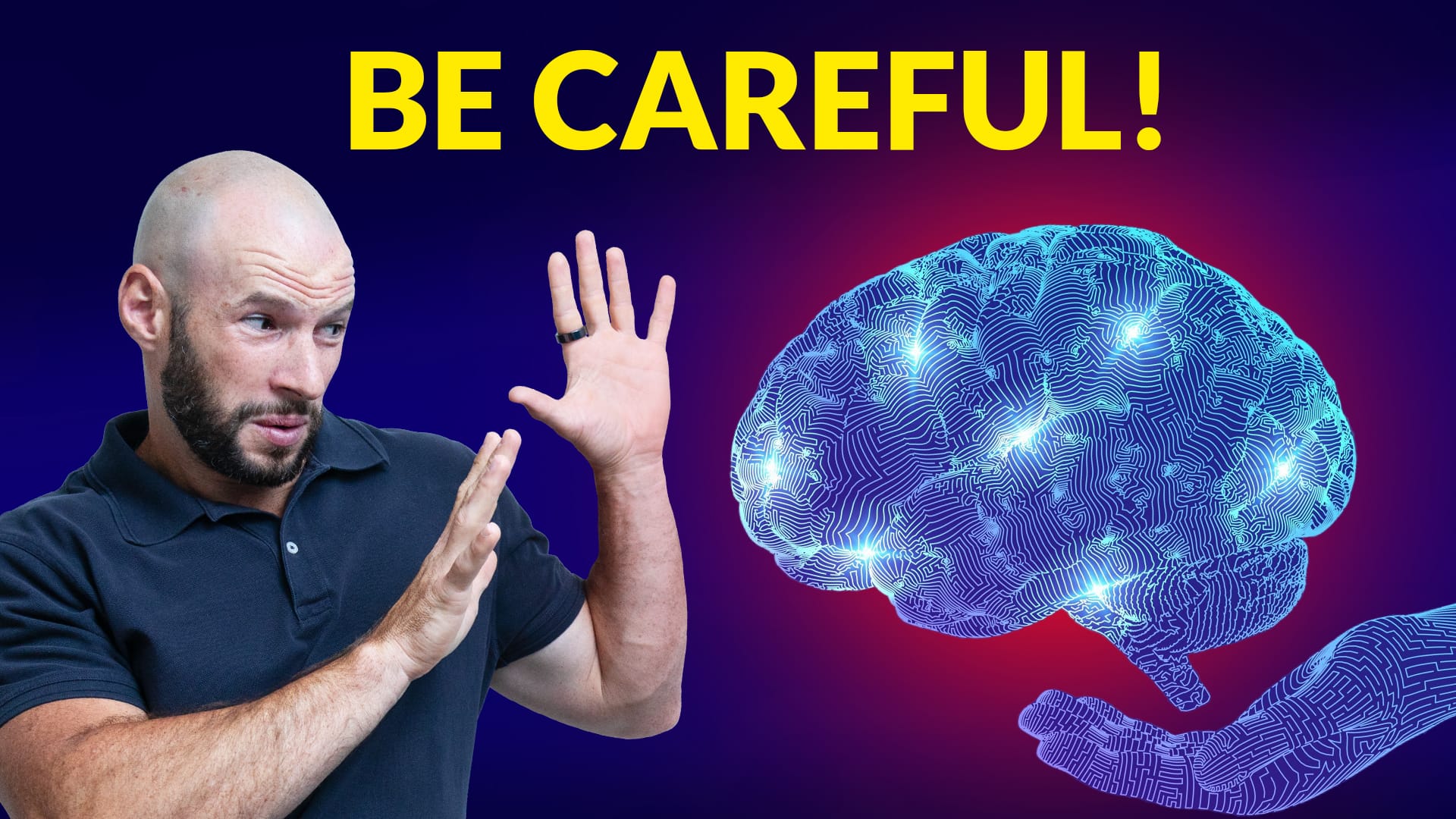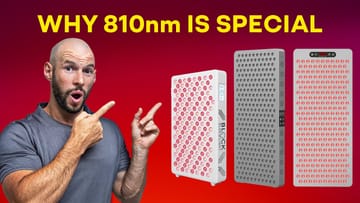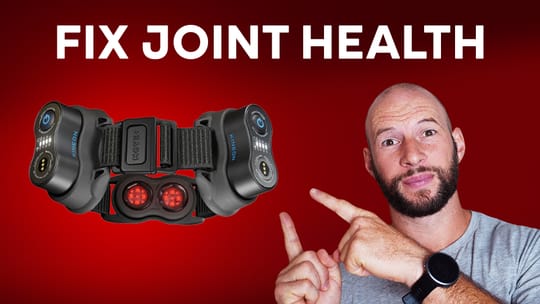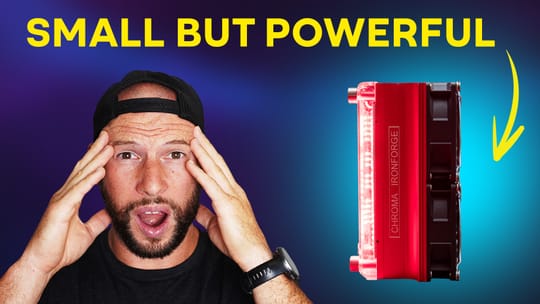I have interviewed Dr. Randy Beck twice. My first interview: Neuroscientist Dr. Beck - Brain Light Therapy Secrets. Then, my follow-up, second interview: Brain Red Light Therapy - Neuroscientist's Secrets! I've included the show notes and links to both below for you.
First Interview: Neuroscientist Dr. Beck - Brain Light Therapy Secrets
Can lasers rewire the brain? In this in-depth conversation with world-renowned neuroscientist Dr. Randy Beck, we explore how light therapy influences neuroplasticity, brain health, and even stem cells. From QEEG brain scans to photobiomodulation dosing, this episode reveals both the groundbreaking potential and the risks of using light on the brain.
Show Notes
Dr. Beck shares decades of research and clinical experience on targeted brain treatments using lasers, DC, and advanced neuroplasticity techniques. We cover what works, what doesn’t, and why “consumer helmets” may not be as safe as advertised.
Key Topics Covered
- Dr. Beck’s Background – from pharmacology to functional neurology and psychoneuroimmunology.
- What is QEEG? – How quantitative EEG measures brain activity and networks beyond standard EEGs.
- Targeted Treatments – why individualized stimulation beats “one-size-fits-all” protocols.
- The Role of Lasers – how specific wavelengths penetrate the skull and activate mitochondria.
- Light Penetration & Mechanisms – neurons literally grow toward light; ATP, nitric oxide, and ROS are explained.
- Potential Side-Effects – why “too much light” can harm, and how helmets risk overstimulation.
- Brain Health Basics – the three essentials neurons need: glucose, oxygen, and stimulation.
- The Importance of Movement – how physical activity fuels memory and neuroplasticity.
- Other Photobiomodulation Mechanisms – interleukins, cytokine signaling, and immune system modulation.
- Photobiomodulation Risks – why aren't all consumer products safe for brains with imbalances?
- Quantifying Needs – the value of QEEG before brain treatments, and the dangers of self-experimentation.
- LED Panels vs. Lasers – differences in penetration and why panels may work better for skin and muscle.
- Treatment Frequency & Dosing – how often to use light therapy, and why more power isn’t always better.
- Does Pulsing Work? – what’s known (and unknown) about entrainment and deeper penetration.
- Quantum Physics & Memory – theories on whether the brain taps into universal memory fields.
- Exciting Developments – why energy medicine may be the “next big leap” beyond pharmaceuticals.
- BDNF & Stem Cells – how light could influence growth factors and stem cell therapies.
- Where to Find Dr. Beck – his textbooks, the Institute of Functional Neuroscience, and his new YouTube channel.
🎧 Prefer to Listen?
Find Alex Fergus – Light Therapy Insiders on your favorite platform:
Second Interview: Brain Red Light Therapy: Neuroscientist's SECRETS!!
Red light therapy can boost ATP, shift blood flow, and change how your brain functions — but the dose, wavelength, and target tissue matter a lot. In this candid follow-up with neuroscientist Dr. Randy Beck, we unpack the biphasic dose response, why “more” can backfire, how brain vs. skin dosing differs, and why personalization (think EEG) beats one-size-fits-all devices — especially when the stakes are your brain.
Show Notes
Host Alex revisits photobiomodulation with Dr. Randy Beck (Institute of Functional Neuroscience, Australia). They cover full-body panels vs. lasers, safe ranges, wavelengths for deeper targets, why some users feel great then worse, and the case for guided protocols — including gut–brain applications used in Parkinson’s programs. Clear message: experiment cautiously, start low, adjust based on response, and don’t self-treat the brain without data-driven oversight.
Key Topics
- ATP surge & biphasic response
Light can rapidly increase ATP; benefits peak, then fall if you overdo it (biphasic curve). Feeling worse? Reduce exposure and titrate back up. - Skin effects & “overdose” signs
Nitric-oxide–driven vasodilation can improve circulation — but too much may trigger rashes, peeling, or pigmentation changes. Listen to your skin. - Sunlight vs. LEDs vs. lasers
Sunlight: broad, incoherent spectrum; LEDs/lasers: coherent, narrow bands with higher tissue-specific intensity. That’s why dose and wavelength matter. - Wavelengths & penetration
~810–860nm often for skin/joint depth; ≥900–1060nm reaches deeper targets but must still traverse skull/CSF. Surface power ≠ target dose. - Panels at face level?
Rising panel power means extra caution above neck level. For beauty/skin, consider short, lower-intensity face sessions; keep high-power dosing neck-down. - Brain risk & asymmetries
Lasering an already “high” cortical region can worsen imbalances (potential mood/cognitive/pain effects). Data-first approach (EEG) is key. - One-size-fits-all head gear
Standard montages may help some, harm others. Personalization beats presets; measure, don’t guess. - Gut–brain photobiomodulation
Clinical programs target head and gut (users often feel more heat in gut tissue). Promising results in Parkinson’s contexts and early fertility work. - Practical dosing guidance
Start low; if benefits fade or you feel “crummy,” cut time/intensity and rebuild. Individual variables (skin tone, distance, sleep, stress, glucose) shift responses day-to-day. - Supportive supplements (non-medical)
For general support around increased metabolic activity: B-complex, vitamin C, CoQ10, quality fish oil, and glutathione were discussed. (Not medical advice.)
Resources Discussed
✨ Visit Dr. Beck’s Institute of Functional Neuroscience: https://ifn.net.au
✨ Subscribe to Dr. Beck’s new YouTube channel: Better Brainwave
✨ Purchase Dr. Beck’s textbook Functional Neurology for Practitioners of Manual Medicine on Amazon
My Reviews
⭐ $2000 Alibaba Laser for Red Light Therapy — Worth It?
⭐ Neuradiant 1070: Red Light Therapy For Your Brain?
⭐ CeraThrive Review: Red Light For The Gut & Brain
